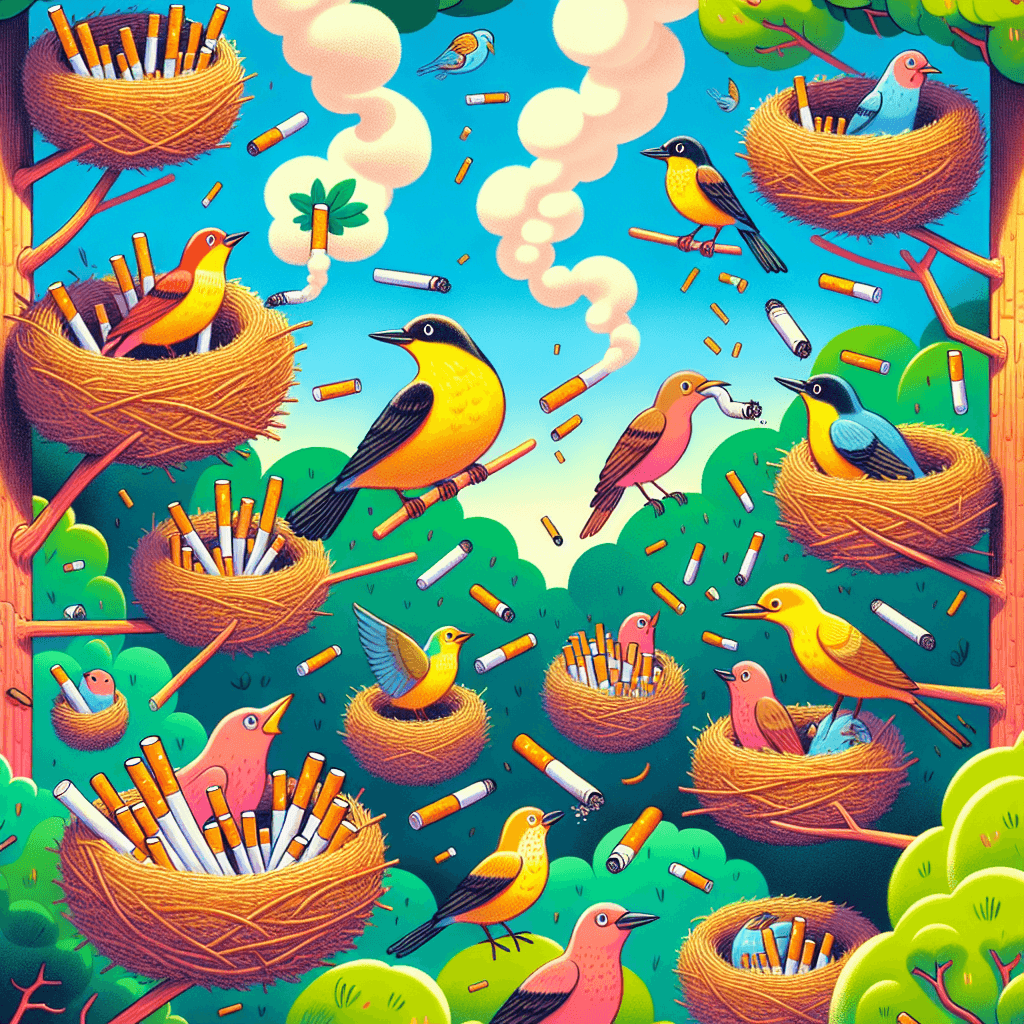Urban Adaptation or Toxic Trap Why Some Birds Use Cigarette Butts in Nests
Ever spotted a cigarette butt woven into a bird's nest? It's not just trash—it's a fascinating urban adaptation that raises a critical question: is this a clever survival tactic or a toxic mistake?


Too Long; Didn't Read
Some urban birds build nests with cigarette butts. The nicotine may act as a parasite repellent, but the toxins could also be harmful, creating a potential evolutionary trap.
Urban Adaptation or Toxic Trap? Why Do Some Birds Use Cigarette Butts to Build Their Nests?
Have you ever spotted a bird's nest and noticed something peculiar woven into its structure – a cigarette butt? It might seem like a strange, even alarming, choice of building material. Yet, for some birds, particularly those in urban environments, incorporating these discarded filters into their homes is a documented behavior. This phenomenon raises fascinating questions about animal adaptation, the pervasive impact of human pollution, and the complex choices wildlife makes in our rapidly changing world. This blog post delves into the science behind why some birds use cigarette butts to build their nests, exploring the surprising benefits and the potential hidden dangers.
An Urban Adaptation: What's Happening?
The sight of cigarette butts in birds' nests isn't just an anecdotal observation; it's a behavior documented by scientists in various urban bird species, most notably house sparrows (Passer domesticus) and house finches (Haemorhous mexicanus). These birds are often seen meticulously weaving the fibrous material of smoked cigarette filters among the twigs, grasses, and feathers that traditionally make up their nests. This isn't just a random incorporation of litter; research suggests there might be specific reasons driving this peculiar choice.
The Leading Theory: Cigarette Butts as Fumigants
The most compelling explanation for why birds use cigarette butts centers on their potential to act as a form of self-medication against nest parasites. According to extensive research, particularly studies led by scientists at the National Autonomous University of Mexico (UNAM), the key lies in the chemical composition of smoked cigarette filters.
- Nicotine's Power: Cigarette butts, even after being smoked, retain nicotine and other tobacco alkaloids. Nicotine is a well-known insecticide. The theory posits that the volatile compounds released from these butts can repel or even kill common nest ectoparasites like mites, fleas, and lice. These parasites can be detrimental to chick health, leading to blood loss, disease transmission, and reduced growth rates.
- Evidence in Nests: Studies have found a significant correlation: nests containing more cigarette butts tend to have fewer parasites. For instance, researchers observed that house sparrow nests with a higher proportion of cellulose acetate fibers from cigarette butts had a lower infestation of blood-sucking mites. Experiments where researchers added smoked cigarette filters to artificial nests also showed a reduction in parasite loads compared to nests with unsmoked filters or no filters at all.
This suggests that birds might be actively selecting these materials for their fumigating properties, essentially using human waste to protect their offspring.
More Than Just Pest Control? Additional Motivations
While the anti-parasite hypothesis is strong, other factors might also contribute to this behavior:
Insulation and Comfort
Cigarette filters are primarily made of cellulose acetate, a fibrous material that can offer good insulation.
- Temperature Regulation: The soft, dense nature of these fibers could help insulate the nest, maintaining a stable temperature for eggs and young chicks, especially in urban areas where temperatures can fluctuate significantly.
- Soft Lining: The material might also provide a softer lining for the nest cup, increasing comfort for the incubating parent and the hatchlings.
Readily Available Material
In urban landscapes, natural nesting materials like soft plant fibers, moss, or animal fur can be scarce. Cigarette butts, unfortunately, are abundantly available litter.
- Opportunistic Use: Birds are resourceful creatures. It’s possible that they are opportunistically using cigarette butts as a readily accessible material that mimics the texture and pliability of natural fibers they would typically seek.
A Double-Edged Sword: The Hidden Dangers
Despite the potential benefits, the use of cigarette butts is not without serious risks. Cigarette filters are laden with a cocktail of toxic chemicals.
- Toxic Exposure: Smoked filters can contain up to 7,000 chemicals, including heavy metals (like arsenic and lead), carcinogens (such as polycyclic aromatic hydrocarbons), and nicotine itself in higher concentrations. These toxins can leach into the nest environment, potentially exposing eggs and vulnerable chicks.
- Genotoxic Effects: Research has raised concerns about the genotoxic effects of these chemicals. Some studies have found evidence of DNA damage in blood cells of chicks raised in nests containing cigarette butts. This could have long-term consequences for their health, development, and reproductive success.
- Ingestion Risk: There's also the potential for small fibers to be ingested by chicks, leading to blockages or internal damage, though this is less documented than the chemical exposure.
The question researchers are still grappling with is whether the anti-parasite benefits outweigh these significant toxicological risks. It may be a complex trade-off that varies depending on the local environment and parasite pressure.
Conclusion: A Complex Interplay
The phenomenon of birds using cigarette butts in their nests is a striking example of how wildlife adapts, sometimes in surprising ways, to human-altered environments. The primary driver appears to be the insecticidal properties of nicotine and other compounds, offering a defense against harmful nest parasites. Additional benefits like insulation and the sheer availability of the material likely play a supporting role.
However, this ingenious adaptation comes at a potential cost, exposing vulnerable young birds to a host of toxic chemicals. It underscores the pervasive and often unintended consequences of human pollution on ecosystems. While this behavior highlights the resourcefulness of birds, it also serves as a stark reminder of the environmental impact of cigarette litter and the complex challenges wildlife faces in a world increasingly shaped by human activity. Further research will continue to unravel the long-term implications of this unique nesting strategy.


